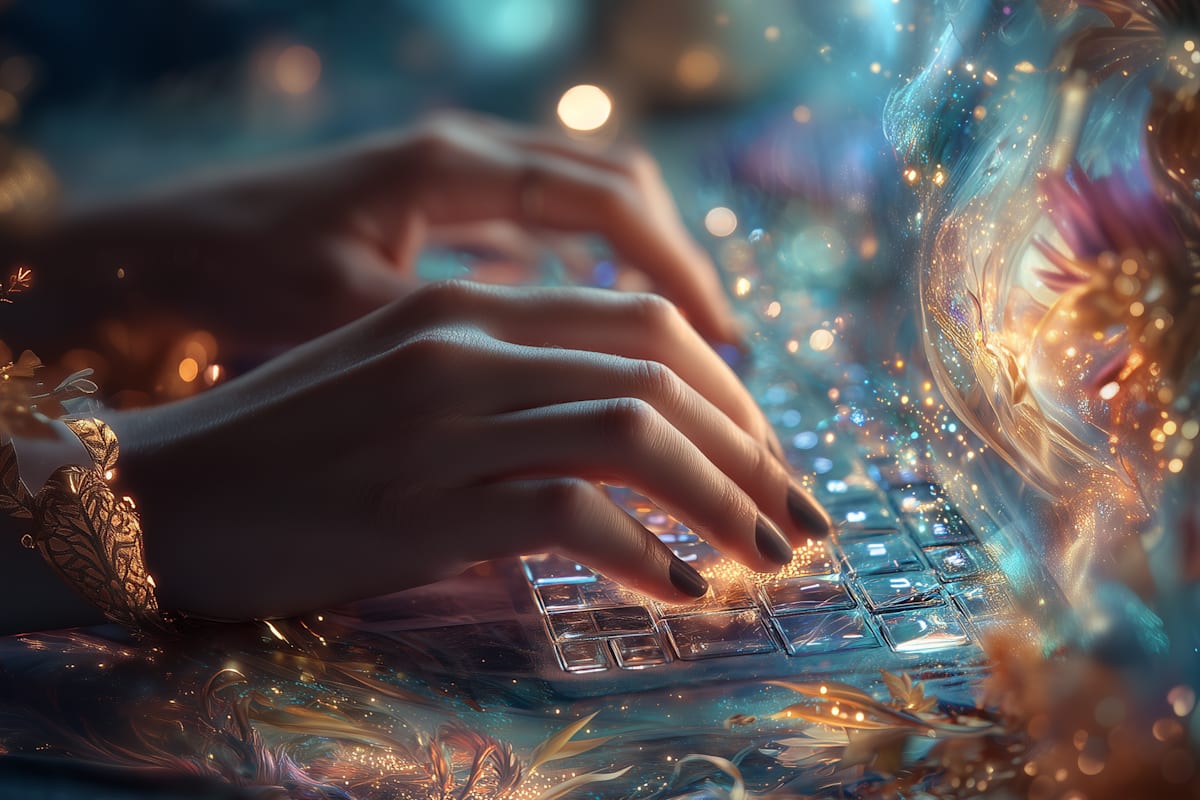It’s been a recurring nightmare, and I’m terrified it will become reality.
It’s always the same. I’ve finally made it—my books are flying off the shelves, I have a loyal following of fans, and I can finally hold my head up high to those who once thought I was a joke. But then catastrophe strikes. I’m accused of using AI to write my books. I lose all credibility. My fans turn on me, and though I try to prove that it simply isn’t true (I keep all my original manuscripts, notes, etc.), it’s no good. People always want to believe the bad, and it’s hard proving yourself innocent when they’ve already made up their minds.
Let Me Be Clear…
I want everyone to know, so there’s no shock later—I use AI. It is a wonderful tool in my editing process and image creation, but it absolutely does not write my stories. They are 100% mine—pure and simple.
I pour my heart and soul into every single story I write. My favorite part of writing is the dawning of a new story. I get so excited when I come up with a new world complete with cast and plot. I bounce ideas off of ChatGPT to check for authenticity, historical accuracy, and flow (especially when I’m creating an entire series). Sometimes, it takes me days just to flesh it all out in a rough outline (because honestly, I know myself and I’m going to chase a few rabbits here and there 😅).
How I Create My Characters and Their Likenesses
I take the character(s) I have in mind to a tool called MidJourney, where I go through an hours-long process of truly fleshing out each character. It’s quite an undertaking to get the AI to create exactly what I have envisioned—and in truth, MidJourney can’t do it alone. After I get it as close as I can, I then take those characters into Photoshop, where I tweak each one to perfection.
But I’m still not done, because now (in true Daphanie fashion 😂) I need my characters together. I need them in a lover’s embrace.
How do you do that, Daphanie?
I’m so glad you asked. 😏
After hours or even days of creating each character, I pull them off their backgrounds, place them in a scene I’ve designed, and carefully adjust lighting and color balance to make everything seamless. My book art takes so much time, but I love every second of it.
Then, I animate. I use Kling AI to bring my characters to life—but it isn’t easy, and it isn’t cheap. Even then, I’m still not finished. I pull the animation into Premier Elements to extract the exact frame I want, then back into Photoshop for final touches. And that’s just one image!
The Journey of a Novel
Once the tone is set and the characters are alive in my mind, it’s time to write in earnest. I’m usually up way past my bedtime, fleshing out every scene with meticulous care. (Once the creative juices are flowing, only sheer exhaustion will silence them. 🥱😴)
I laugh and cry with my characters. I fall in love with them. Each one gets their own character sheet in my Scrivener binder with every detail—from appearance to hopes, dreams, and fears. They even have birthdays! 🥳
It takes me weeks, even months to draft my first draft. And that’s only the beginning.
- First revision: adding environment—smells, sounds, lighting, atmosphere.
- Second revision: deepening emotion and making the experience tangible.
- Third revision: fixing plot holes, timeline, and flow. (I use Aeon Timeline for this.)
- Fourth revision: final polish, grammar, and feedback from beta readers.
Where AI Comes In
So in all that work, where does AI play a role?
- ChatGPT: I use it to check for flow, cohesion, and grammar. Sometimes I bounce ideas off of it, the way another author might brainstorm with a critique partner.
- ProWritingAid: I use its AI to check for plot holes and inconsistencies. Helpful, but not perfect.
That’s it. No “AI writing my story.” No ghostwriting. Just tools that help polish the words I’ve already written.
Why I’m Sharing This
There’s so much stigma surrounding AI these days—a new sort of prejudice against those who see it as a tool to improve their craft.
But let me be clear, my friends: AI is just that—a tool. It’s powerful, cost-effective, and empowering. But it can never replace human creativity. Every story, plot, character, and scene is mine—written with meticulous care.
The point of this blog post is to encourage others: use whatever tools are at your disposal. Don’t be afraid of AI, and quit judging others for using it. AI is your friend, not your enemy.
I’ve heard people say, “We’ve opened Pandora’s box, and there’s no putting it back.” They’re right. AI isn’t going anywhere. It’s here to stay, whether we embrace it or not.
Yes, some abuse its potential, and that’s a shame. But that’s the exception, not the rule. For many of us, AI is simply the polish—not the creator.
✨ Final Thought: I am, and always will be, the author of my stories. AI may help me refine the words, but the heart and imagination—the very soul of the book—will always be mine. ❤️
